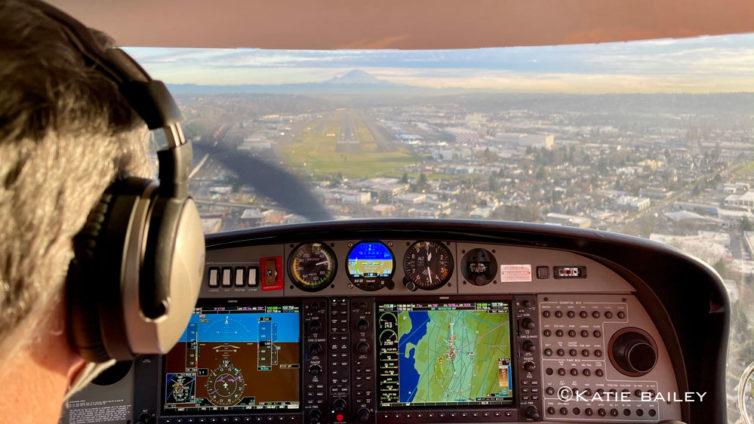
On final for runway 14R at BFI in a Diamond DA-40 – this wasn’t from our mountain-flying day, but it’s too pretty of a photo to leave out of the article
This is a continuation of my multi-part series on learning to fly. You can read the whole Fly With Francis series here.
The lousy Pacific Northwest early spring weather notwithstanding, I’ve made good progress towards learning both the Garmin G1000 instrumentation and the Diamond DA-40 aircraft. We recently got a decent break in the weather that allowed a flight from Seattle across the Cascade Mountains to Ellensburg for some basic mountain flying training.
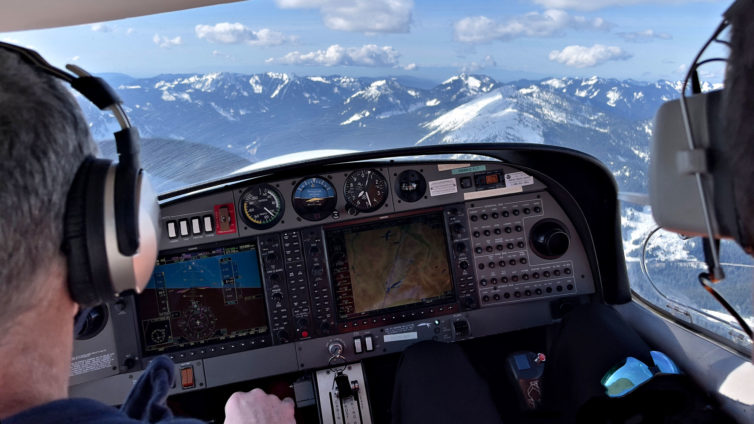
Cruising westbound at 6,500′ over Snoqualmie Pass was an amazing experience – Photo: Katie Bailey
I’ve got about 10 hours in the DA-40 now, all but one of them with Carl, my ever-patient CFI. I finally felt comfortable enough with the plane to take it out on my own last week, even though Carl had deemed me ready to do that about five flight hours previously. I just wanted a bit more time with the plane, as it’s quite a bit different than the Cessna 172, especially in that it’s a lot faster and a bit fussier when it comes to controls, and it’s got a constant-speed propeller (also sometimes referred to as a variable-pitch propeller) that needs tending to via a dedicated control lever.
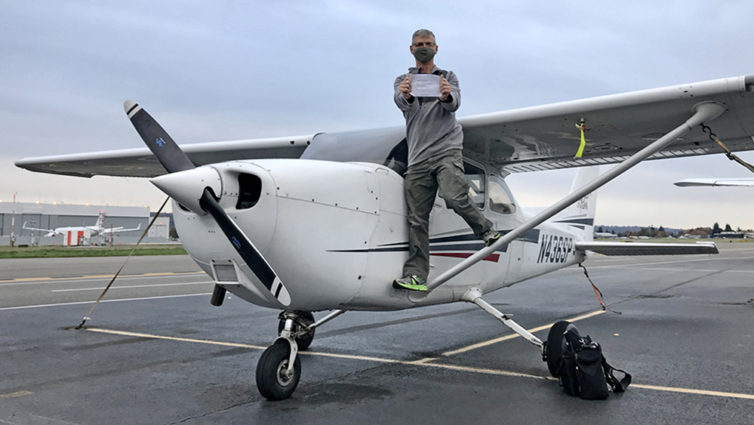
Success! I finally earned my private pilot certificate!
This is a continuation of my multi-part series on learning to fly. You can read the whole Fly With Francis series here.
After a year and a half of concerted effort, I’ve finally completed my initial training and earned my private pilot certificate in early November. It’s a great feeling!
For those who’ve been following along on my adventures at Galvin Flying, it’s been a long process of successes and setbacks, many of which were weather related because I live in the Pacific Northwest, where the local joke says that it only rains once a year it starts raining in late October and stops raining on July 5 (it always seems to rain on July 4).
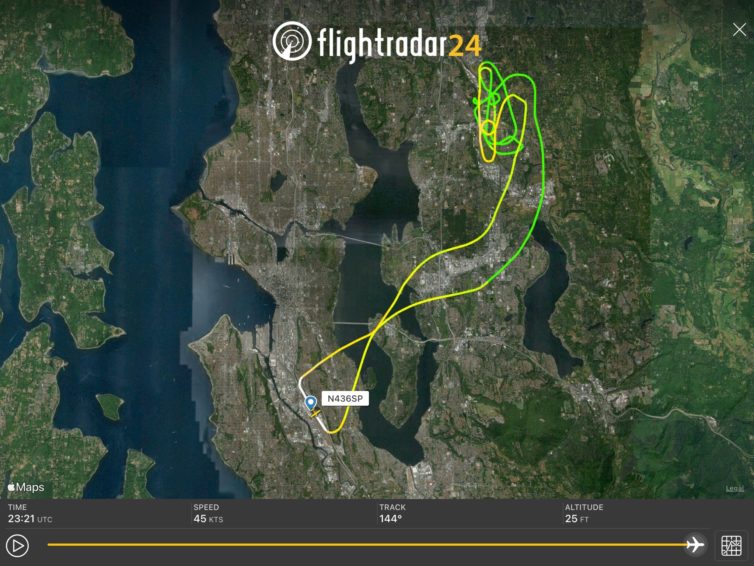
In case you ever wondered what the track of a checkride looks like, here you go. Screen capture courtesy FlightRadar24
Anyway, I did several mock checkrides in the weeks leading up to the actual FAA one, and had to complete Galvin’s end-of-course checkride before that. The end-of-course checks are designed to be more difficult than the actual checkride to ensure that pilot candidates are as prepared as possible.
The FAA examiner, also known as a designated pilot examiner or DPE, selects from a long list of information and flight maneuvers for the actual checkride known as the Airman Certification Standards. The check airman who oversees the end-of-course checks runs through the entire list to be sure you’re ready.
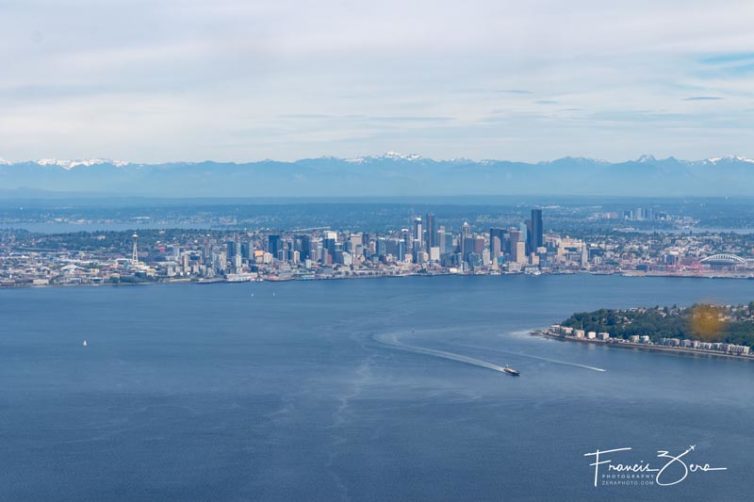
Returning to Boeing Field after my first solo cross-country flight to Port Angeles, Wash. That’s the Seattle skyline in the foreground, Bellevue in the middle-right, and the Cascade Mountains in the distance
This is a continuation of my multi-part series on learning to fly. You can read the whole Fly With Francis series here.
So, it’s been a while since I’ve written an update, but that doesn’t mean I’ve not been making progress.
Since the last installment, I’ve done my three cross-country solo flights – they’re a requirement for the PPL, and consist of several solo flights away from one’s home airport. Cross-country meaning, you know, crossing the countryside and not a transcontinental flight in a small plane, which would take a couple days at best.
Requirements for the cross-country flights are that the each one has to include one leg of at least 50 nautical miles and a full-stop landing. For the long cross-county, the flight has to be a minimum of 150nm and include one leg of at least 50nm and full-stop landings at three airports, including returning to the point of origin.
-
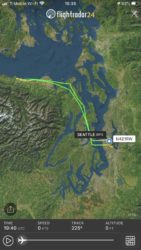
-
My first cross-country flight was from Boeing Field to Fairchild International Airport in Port Angeles, Wash. -FlightRadar24 screen grab
-
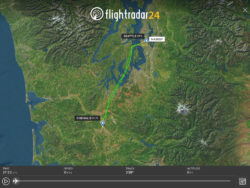
-
The second cross-country flight was from Boeing Field to Chehalis, Wash. -FlightRadar24 screen grab
-
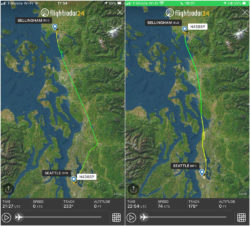
-
The third (long) cross-country flight was from Boeing Field to Bellingham, Wash., with a stop at Paine Field in Everett on the way home. -FlightRadar24 screen grab
For my flights, the first one was from Boeing Field (BFI) up to Port Angeles on the Olympic Peninsula. It was a spectacular day – completely free of turbulence, hardly any other air traffic, and clear as the proverbial bell.
The second one was the following week, from BFI to Chehalis, Washington, a bit south of Olympia. It was far more normal, with usual amounts of air traffic and slightly bumpy/windy conditions.
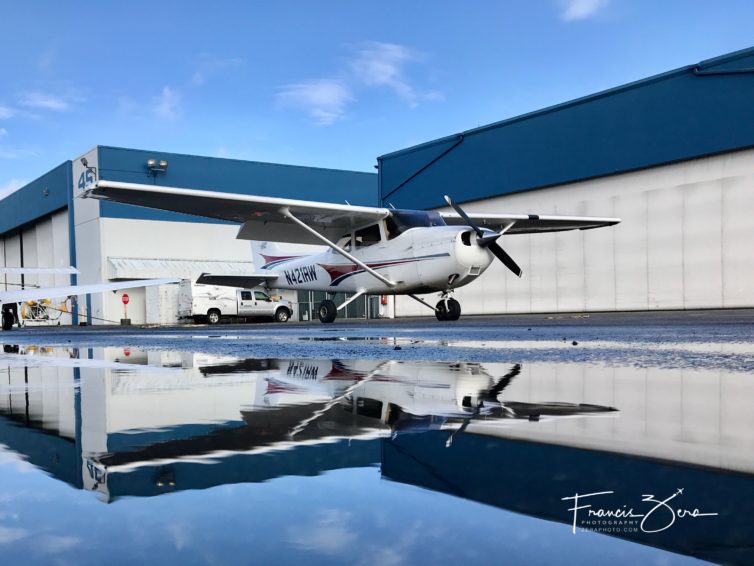
Likely my favorite C172 in Galvin’s fleet
This is a continuation of my multi-part series on learning to fly. You can read the whole Fly With Francis series here.
March 20 marked the one-year anniversary of my having started flight training; my first ground-school class was already more than 12 months ago.
Deciding to pursue a private pilot’s certificate has been, simultaneously, the most fiscally irresponsible thing I’ve ever done, and the most rewarding thing I’ve ever done. I’ll leave that to the reader to reconcile; I’m totally OK with the decision.
Progress has been sporadic, mostly due to a particularly bad winter with consistent low clouds that precluded flying and resulted in dozens of cancelled training flights. On the upside, now that spring is here, I’ve started to make progress again, although COVID-19 holds the potential for future disruptions. Our governor here in Washington state was kind enough to declare flight training to be among the exempted activities during the lockdown (at least for now).
Since my last post, I’ve completed both my day and night cross-country flights with my instructor, have been working a lot on navigation and flight planning, and now have returned to practicing basic maneuvers to kick off the rust from a winter’s worth of very little flying.
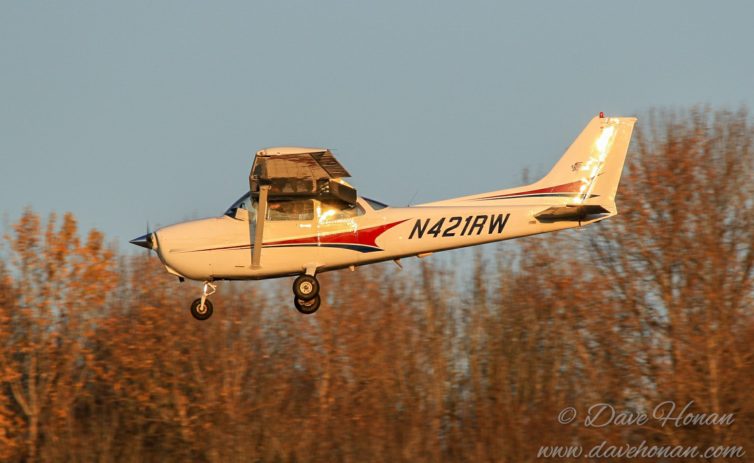
Doing some solo pattern work on a recent sunny Seattle afternoon – Photo by Dave Honan
This is a continuation of my multi-part series on learning to fly. You can read the whole Fly With Francis series here.
Progress is being made: I’ve done several more solo flights, and am feeling lots better about landings, maneuvers, and dealing with air-traffic control. We’re working on navigation and cross-country stuff now.
The blues part from the headline comes from the weather-enforced gaps in my training flights. Here in the Pacific Northwest, winter usually means low ceilings and visibility-lowering precipitation. Scheduling time in aircraft becomes a game of chance – you sign up for sessions in advance and then hope for the best.
We’ve tried three times now for a cross-country flight that will qualify for the FAA requirement of flying at least 50 miles away from one’s home airport. We’ve had to cancel all three because of poor weather.









